#yucca street
Explore tagged Tumblr posts
Text

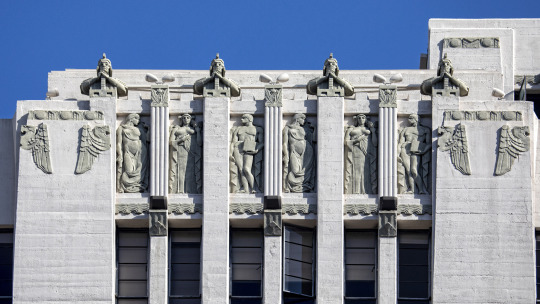
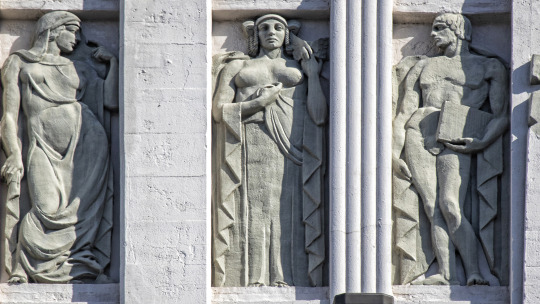
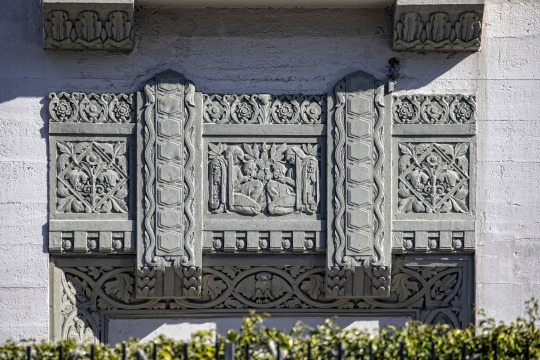
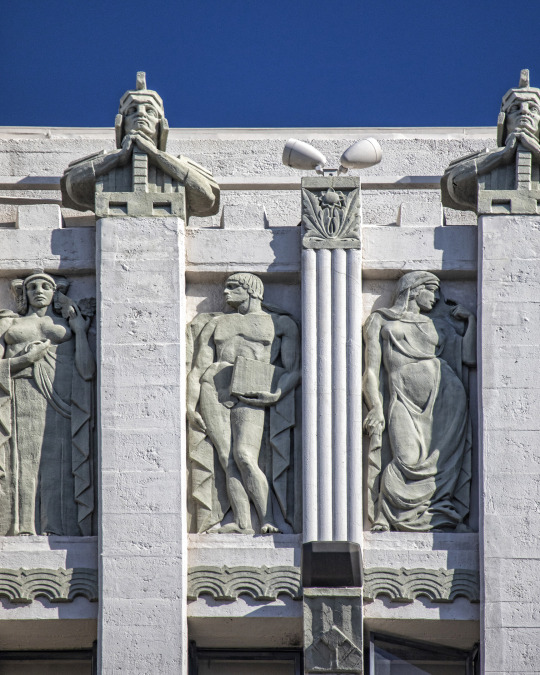
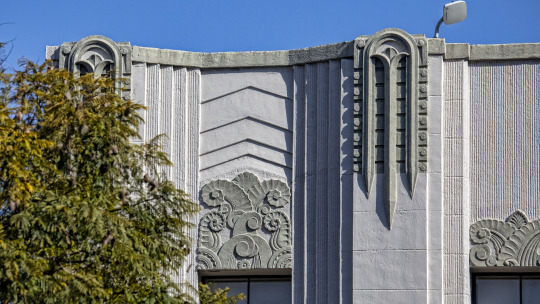

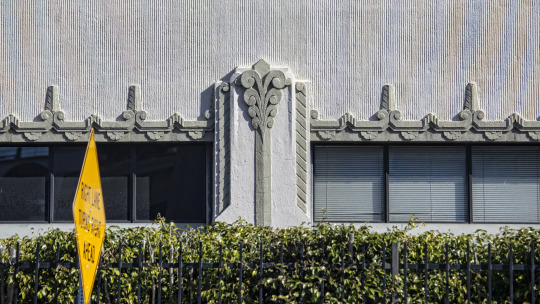


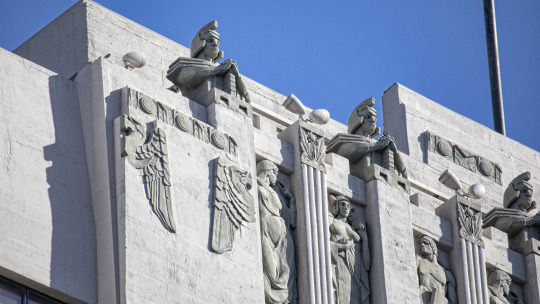
On December 7th, 2023, the Art Deco Society of Los Angeles will go before the City of Los Angeles Cultural Heritage Commission to try & get this building Landmarked. Looking at these photos it’s difficult to see why it would get turned down but we’ll see… Photos taken March 2023.
260 notes
·
View notes
Text

Blue Beaked Yucca, Portland, OR © Robert Pallesen
#Blue Beaked Yucca#Yucca#Trees#Street Scene#PDX#Portland#Urban Landscape#Black and White Photography#Robert Pallesen
56 notes
·
View notes
Photo







2023.03.12 gist.the.artist 어제 콘서트 너무너무 재밌었고 정말 행복한 하루였습니다 !! 정말 열심히 했고 앞으로도 더 열심히 활동하면서 좋은 모습 보여드릴게요!! 항상 잘챙겨주시는 토일이형 너무 감사드리고 덕분에 이런 좋은 기회를 경험했네요 ㅠ 혼자서는 절대 경험 못할 날들을 보내고 있는거같아요 ㅎㅎ 어제와주신 모든 분들 다시 한번 감사드리고 앞으로도 더 멋진 행보로 보답하겠습니다. 사랑합니다 ❤️ @toil1204 감사해여 형🥺 📷 @parohgraphy
4 notes
·
View notes
Note
A small detail but I just wanna say I LOVE your food worldbuilding in your fic! I get so hungry reading about the dishes 😭 was there any inspiration behind your thoguts on Zaun crusine or any other fun lore? I was also wondering if you had thoughts on Piltover crusine and how that compares to Zaun.
Thank you so much<3
I actually have a Foodboard on Pinterest for Zaun's decadences and delicacies!
Re: Zaun and Piltover's food-canons...
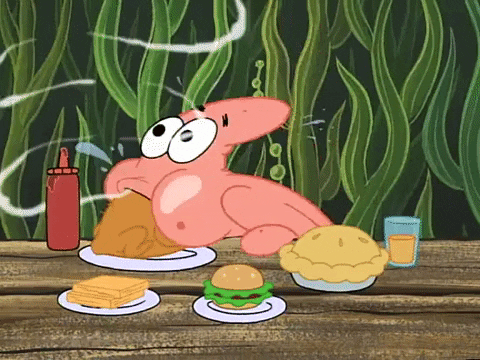
I'm basing Zaun on a hodgepodge of multicultural meccas like New York, Mexico City, Mumbai, Rio, Tokyo, Seoul, Istanbul, etc. Lots of different histories converging to form a diverse street-food scene where folks eat on-the-go. Given the Fissures began as a mining town, the fare is heavy on greasy proteins and starchy staples to keep the average worker on his feet. At the same time, owing to their proximity to the riverside, Fissurefolk have a taste for the ocean, too.
The end result is a very subterranean and industrial city that's very, very proud of its culinary heritage, even if the "cuisine" itself isn't exactly pretty or refined. There's a certain "ghetto hustle" to it, with scraps taken from wherever it's available, and improvised into something distinctly its own. Plenty of emphasis on cheap shellfish, squid, octopus, shrimp, clams, etc, as they're a hardier food source that can be found in great quantities downriver.
There's also a lack of sunlight, fertile soil, and fresh greens in Zaun. So much of what's grown organically Down-Low is the more straightforward variety of root vegetables, ranging from potatoes, rhizomes, yams, lotus, yucca, sweet potatoes etc. There's also lots of cellars with candle-lit rhubarb, and a very eclectic range of mushroom gardens.
As for meat:
The Deadlands, which are more of a 'wild west' type terrain in the FnF verse, sport a hardy ecosystem of cave-dwelling, marsupial-like creatures I've dubbed Sump-voles. They're furred, and the size of a medium-large housecat. They're extremely agile and intelligent, and able to survive off the sparse vegetation. They're the primary source of food for the folks of the Deadlands.
There's also sump-boars: bristly, foul-tempered, and omnivorous. A bit like wild boar, but larger and more aggressive. Their meat, while rather gamey, is a source of rich protein, and often cured and smoked, or served as a roast during the Equinox Feast as a 'last supper', a chance to indulge in some fatty, delicious pork before the dark winter months of austerity. Their hides are also a valuable commodity and can be tanned and used to craft clothing, their bones ground into powder for fertilizer, and their tusks fashioned into weapons, jewelry, etc.
In Zaun proper, the primary source of meat are sump-rats. For the chem-barons, they are raised in massive, hydroponic-like farms that cultivate the creatures on an industrial scale. For the poor, they're either the unfortunate victims of homesprung traps or the prey of the many, many feral cat colonies. The cats in Zaun are extremely large and muscular, bred to be fierce. They're often mutated and have been spliced with a range of different DNA, from gen-0 to gen-X.
There's no real 'normal' cat, dog, or bird in Zaun; it's a land where everything is a mutant owing to the chemical radiation that pervades every single facet of life, to say nothing of its ambitious history of genetic manipulation.
That goes ditto for the bugs.
Necessity breeds creativity, and Zaun's not averse to a little entomophagy. In fact, the more common, and less-fetishized, way to get one's protein is through the consumption of locusts, beetles, dragonflies etc. These are a mainstay, and you'll see them sold on every corner. They're generally fried, and have a very similar crunch to a fried cricket. There's also cave-wasps: nasty buggers who build their hives in the caverns, and have a sweet, honey-like substance inside their abdomen. It's considered a delicacy, and a luxury item.
The cave-wasps are also a rare species that actually produce honey (similar to the B. Mellifica, or Mexican Honey Wasp) and the honey they store, though it has a much thicker, gel-like consistency, is prized as a source of hydration and energy.
It's also a nifty hallucinogen, and can be mixed into ales, beers, and ciders.
In terms of fixings and flavorings: Zaun is an underground city. That means staples like sugar and spice are at a premium, and either imported from the harbor, or smuggled from Topside. However, Fissurefolk understand the importance of boosting their immunity with the right nutrients, and have a keen interest in herbal remedies. There's a strong apothecary culture in Zaun, ranging from quacks to savants. You'll see plenty of peddlers selling the dried mushrooms, roots, leaves, and other fungi, all of which can be boiled into a tea, or steeped to make a broth.
Two homegrown minerals Zaun prides itself on are its salt deposits and its volcanic rock. Both are extremely potent, and have sparked a range of industries from salt-curing to cosmetic masks. The rock salts are a rich source of iodine, and used to clean wounds. The volcanic rock has a high level of iron, and is ground into powder and mixed into broths to prevent anemia and boost blood flow. There's also a thriving industry for beauty products in Zaun. Because of the constant, humid air that lingers beneath the surface, it's common for folks to break out into acne, boils, or other rashes. The rock salts are a good exfoliant and antiseptic.
Jinx, for instance, has an entire apothecary's chest worth of creams, gels, and tonics she applies whenever she feels a breakout coming on. She's also not above mixing her own blemish cream out of a blend of rock salt, crushed-up coral, and a few drops of oil squeezed from a luminous jellyfish.
Silco, similarly, uses a combination of salt water and crushed-up volcanic rock to exfoliate the calluses on his palms and heels, and soaks once a week in a warm bath of rock salt, mineral oils, and medicinal Shimmer. He swears by the concoction, and considers it the secret to keeping his joints well-lubricated and his reflexes in fighting trim for running from stray bullets.
And Jinx's occasional tantrum-prone grenade.
The Zaunite diet is also very heavy on pickling. It's an excellent way to preserve foods, and a great source of vitamins. Their choices run the gamut from sour pickled cabbage to spicy, chili-garlic fermented fish to lime-spiked octopus. Pickling is a necessity. And, because there's not enough space for farms, livestock, or pasture land, a lot of the food in Zaun is preserved via canning and jar-making. There's a robust canning industry, and a very well-developed glass-blowing and masonry business, lauded for its innovative shapes and designs.
Finally, there's the beverages.
Zaun has a strong history of drinks, from fizzy, chemically-colored sodas to a wide variety of spirits. There's an emphasis on teas, tisanes, and coffees, as the underground water can't be fully filtered, and isn't exactly the cleanest. A cup of hot tea with some lemon and honey is an effective way to keep one's immune system up and running. Zaun is also famous (re: notorious) for coffee that's guaranteed to jolt you wide-awake after a nasty hangover. Their most famous brew is the Wake-Up Call, which is a mix of ground coffee beans, ground cacao beans, ground guarana seeds, a touch of cinnamon, and a dash of powdered cayenne pepper.
It's not for the faint of heart.
The most popular non-alcoholic drink in Zaun is cherry soda, which is basically a cross between Coca-Cola and cherry Dr. Pepper, but brewed with a mixture of fruits, berries, and a healthy dose of cave-wasp honey and citric acid. It's fizzy, and tastes amazing. It's also extremely cheap, owing to the fact that a lot of the fruits and berries are foraged from the caverns, and the honey is, well, free-range.
In terms of alcohol, there's a huge emphasis on beer, wine, and ale, owing to the fact that these can easily be canned and fermented, and can last for long periods of time without refrigeration. Potato beer is an extremely common, and easy-to-consume source of calories. It's light-bodied, and low-alcohol, with a range of styles, from pale-ale, amber, and dark. There's also a huge emphasis on hops and malted barley, as these are cheap to acquire, and readily available belowground.
Zaun's signature drink is made via fermented cavernfruit. It's very hoppy, fruity, and acidic. It's got a high alcohol content and is a great thirst-quencher. Then there's Devilfruit: a deep red liquor made from a blend of various berries, and a texture and viscosity similar to cherry liqueur. It's usually enjoyed neat, but can be mixed with a splash of mineral water, or served over crushed ice. There's also drinks fermented from unusual ingredients such as mushrooms and fungus. One, known as Dungeon's Kiss, is a cloudy, milky white ale made from the sap of a cave-dwelling species of mushroom. It's extremely thick, the color of a pumpkin spice latte, and guaranteed to get you hammered in five sips.
Zaun's drinks are all brewed, bottled, and served locally. They're a point of pride, and a great way for families to earn their fortune. It's a fiercely competitive industry, and there's a lot of inter-clan rivalry.
In the FnF universe, I imagine Piltover has a very different diet than Zaun, given its bucolic setting, proximity to the sea, and the fresh produce, dairy, and livestock they import from all four corners of Runeterra. The food culture is diverse and beautifully artisanal.
There's a bustling farmer's market, lots of bakeries and cheese shops, and plenty of emphasis on freshness, seasonality, and regionalism. There's also a strong tradition of wineries, distilleries, and breweries. As a city of commerce, they also have a robust, and thriving, shipping and distribution industry.
All of this reflects a more rigid hierarchy of social classes that is more centered on the "white plate" aesthetic. It's all high-quality and extremely nutritious, but it's also very…bland and uniform. In Piltover, there's little to no street food culture, and there's a general disdain for the sort of messy, greasy pap that's associated with Zaun. You don't eat with your hands; you use utensils. You don't slurp, slop, or smack your lips.
And you certainly don't lick the sauce off your fingers.
In Piltover, there are very clear rules about dining etiquette, and the "food world" is just another part of the culture around class distinction, refinement, and propriety. However, the rigidity and regimented nature of their meals can be very stifling, especially when compared to the raucous and rollicking culinary culture of Zaun. It's therefore not uncommon for Piltovans to sneak off Down-Low, roll up their sleeves, and enjoy a bit of greasy, sticky-fingered fun.
Most consider it a calorie-loaded, guilt-free "cheat day."
#arcane#arcane league of legends#arcane silco#silco#forward but never forget/xoxo#asks#forward (never forget)/xoxo#arcane jinx#jinx#arcane vi#vi#arcane zaun#zaun#arcane piltover#piltover
48 notes
·
View notes
Text
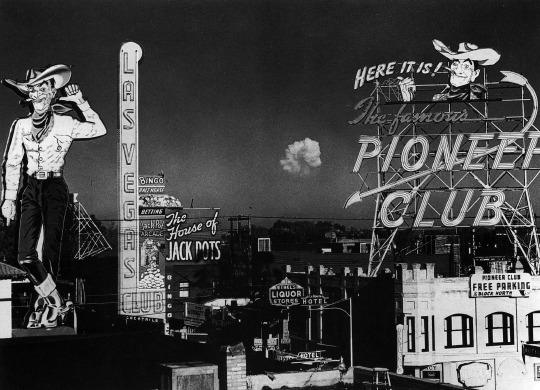
Las Vegas, Fremont Street early 1950s, Mushroom clouds in the west from aboveground testing of nuclear devices at Frenchman and Yucca Flats by the Atomic Energy Commission
#las Vegas#black and white#sign#Fremont street#mushroom cloud#billboard#advertisement#design#art#architecture
109 notes
·
View notes
Text



Rainbow Studios. 6272 Yucca Street.
89 notes
·
View notes
Text

Edward Ruscha. Mock Up #17 (South West Corner of Yucca Street and McCadden Place), 1971. Gelatin silver print, glassine, pigment, pencil, and ink on board.
27 notes
·
View notes
Text
Alaska: Igloo, Kodiak bear, Iditarod sled dog race, Denali
Hawaii: pearl harbor, pineapple
washington: Space Needle, apple, mt st helens, rainier national park
oregon: roses, lighthouse, crater lake, oregon trail, hiking
california: redwood tree, white water rafting, gold, golden gate bridge, silicon valley, yosemite national park, wine country, sierra nevada mountains, hollywood, joshua tree
nevada: silver, las vegas strip, hoover dam
idaho: gemstones, potatoes
montana: rocky mountains, glacier national park, grizzly bear, bison
wyoming: yellowstone national park, old faithful geyser, bucking bronco
utah: great salt lake, zion national park, skiing
arizona: lake mead, grand canyon national park, montezuma castle, turquoise, saguaro cactus
new mexico: pueblo, yucca plant, carlsbad caverns
colorado: rocky mountain national park, columbine flower, elk
north dakota: oil, wind energy
south dakota: crazy horse memorial, the badlands, mount rushmore
nebraska: chimney rock, bald eagle, train
kansas: tornadoes, dodge city, sunflower
oklahoma: tomato, wheat, osage shield
texas: cattle, prickly pear cactus, oil refinery, the alamo, NASA Johnson space Center
Minnesota: lake of the woods, wolf, deer
iowa: prairie grass, corn
missouri; Hog, gateway arch
arkansas: razorback hog, banjo
louisiana: crayfish, mardi gras, jazz music
wisconsin: dairy
illinois: Willis tower, tractor, lincoln
michigan: copper, iron ore, automobile manufacturing, motown
indiana: Car
ohio: Rock and Roll Hall of Fame, tires
pennsylvania: street mill, liberty bell
new jersey: constitution
maryland: blue crab
virginia: mount vernon
north carolina: wright brothers national memorial, tobacco farm, great smoky mountains national park, appalachian mountains
south carolina: fort sumter
georgia: peanuts, peach
florida: oranges, kennedy space center, alligator, everglades national park
alabama: cotton, civil rights movement
mississippi: magnolia
tennessee: country music
kentucky: horse racing
west virginia: coal
new york: apple tree, financial market, statue of liberty
massachusetts: american revolution
vermont: maple syrup
new hampshire: fall colors
maine: acadia national park, moose, lobster
And don’t make me repeat it!!!!!!!
7 notes
·
View notes
Note
Best street food where you live?
That would be butifarra
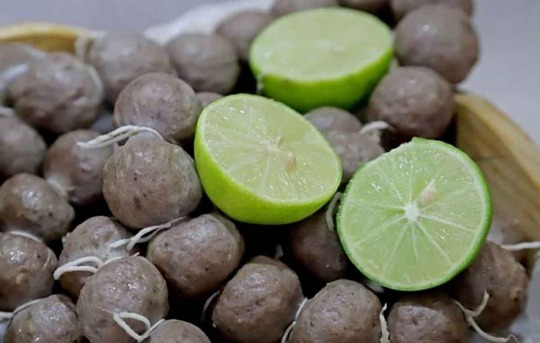
It’s a type of sausage made out of pork, which is eaten at room temperature and with lemon, and usually accompanied with a type of yucca pastry called bollo de yuca.
12 notes
·
View notes
Photo

Yucca, Portland, OR © Robert Pallesen
41 notes
·
View notes
Text
youtube
바라클라바 REMIX (Feat. 스트릿 베이비, 제네 더 질라, 스키니 브라운, 카키, cwar, 김감전, 래원, 캄보, 던밀스) - 제이씨 유카, dnss | [DF LIVE]
Balaclava Remix (feat. Street Baby, Zene the Zilla, Skinny Brown, khakii, cwar, ksmartboi, Layone, Kambo, Don Mills) - Jayci yucca, dnss
#balaclava remix#jayci yucca#dnss#khh#khiphop#kambo! best flow 🤷♀️#don mills couldn't make it it seems#Youtube
4 notes
·
View notes
Text
Down On The Corner
Yucca elephantipes at Taco Bell in San Luis Obispo in 1968. Down on the corner, or at least next door to the western corner of Olive Street at Santa Rosa Street in San Luis Obispo, Creedence Clearwater Revival stopped at Taco Bell, supposedly about the second of August of 1968, on their way from Palo Alto to Santa Monica. They were famous for such horticultural songs as ‘Run Through The Jungle’,…

View On WordPress
0 notes
Photo





Here’s Looking at You: Yucca Avenue and Vine Street
34 notes
·
View notes
Text
Custom Luxury Home Designs for Los Angeles’ Diverse Landscapes
Los Angeles’ diverse landscapes—from sun-kissed coastlines and rugged hillsides to urban areas and arid deserts—offer unique opportunities and challenges for custom home design. At Dean Larkin Design, we specialize in creating bespoke luxury homes that embrace these unique environments and enhance the quality of life for their inhabitants. Our approach combines innovative architectural solutions with sustainable practices to meet the specific needs of each setting, ensuring that each home is a perfect blend of form, function, and environmental awareness.

Commonly Asked Questions about Designing Custom Luxury Homes in LA
We design luxury homes in all types of landscapes. We have projects in progress in Joshua Tree, with its sandy landscapes full of protected yucca trees. We have done many urban projects, like our remodel of a condo once belonging to Robert Wise. The Swallow Project we completed with Bradley Bayou was set amidst the hills found in the Bird Streets of LA. With such variety, we hear a lot of questions about how we handle the different challenges, and today we will answer some of them. In upcoming articles, we will discuss these questions in more depth.
What are the benefits of custom home design?
Custom home design is the only kind we do. Our clients appreciate working with us as a team to allow tailored solutions that meet specific lifestyle and aesthetic preferences. Our goal is to ensure that every element of the home is created for the homeowner’s needs and desires, so they get wowed every time they come home.
How does landscape influence the architectural design of a custom home?
The landscape significantly influences architectural design by dictating the structural foundations, materials, and overall aesthetics. We also want to showcase the best views from the rooms most occupied by the homeowners, and this can mean unique orientations, panoramic windows, or unique lighting arrangements.
What sustainable practices are best for building in diverse Los Angeles climates?
Sustainable practices include using locally sourced materials, solar panels, and rainwater harvesting systems. We also make use of passive lighting and cooling systems among other things. These methods reduce the ecological footprint and enhance the energy efficiency of homes across varying Los Angeles climates.
“As a luxury Los Angeles architect, my mission is to design homes that not only push the boundaries of aesthetics but also embrace the unique environmental and cultural characteristics of each location. In Los Angeles, every landscape tells a story, from the dynamic coastlines to the serene deserts. Our designs are crafted to reflect this diversity, ensuring that each home is a personal sanctuary that enhances the homeowner’s connection to their surroundings. We are committed to using sustainable and innovative solutions that cater to the evolving needs of our clients while respecting the rich tapestry of Southern California’s landscapes.” — Dean Larkin, AIA, Founder of Dean Larkin Design
How can indoor-outdoor living be optimized in different Los Angeles landscapes?
Indoor-Outdoor living is part of the Dean Larkin Design DNA. We blur the lines between inside and outside with features like retractable glass walls, loggias that feel like they are part of the home and the landscape, and transitional flooring that extends from inside to outdoor living spaces, tailored to each unique landscape from beaches to city rooftops.
What are the zoning considerations for building custom homes in various Los Angeles areas?
Zoning considerations involve understanding local regulations on building height, setback requirements, land use restrictions and much more. Navigating these rules with a knowledgeable architect is crucial to project success and compliance.
How can water conservation be integrated into luxury home designs in Los Angeles?
Water conservation can be integrated through low-flow fixtures, drought-tolerant landscaping, and greywater recycling systems. These features are often used for sustainability in luxury homes, especially in arid regions like Los Angeles.
What are the best security features for luxury homes in various settings?
Security features include high quality doors with technological capabilities, advanced surveillance systems, automated gates, and reinforced safe rooms. Smart security technology allows for real-time monitoring and alerts, providing peace of mind in any location.
What technology is essential for modern homes in desert environments?
In desert environments, essential technologies include automated climate control systems and passive cooling features, energy-efficient appliances, and smart home systems that monitor and adjust to temperature changes for optimal comfort and efficiency.
What are the key considerations for designing a custom home on Los Angeles’s coast?
When designing a coastal home in Los Angeles, architects must consider factors like salt air corrosion, high winds, and flood zones. Proper material selection is one important factor in assuring structural integrity to withstand a coastal environment while maintaining aesthetic appeal. Design for coastal properties may include corrosion-resistant materials and designs that enhance natural ventilation to leverage the sea breeze.
How do architects ensure privacy in hillside homes while maximizing views?
To ensure privacy in hillside homes, our designers utilize strategic landscaping, innovative window treatments, brise soleil, and orientation techniques that shield interiors from outsider’s eyes while optimizing the best panoramic views of the property’s unique surroundings.
How does the architectural style differ between coastal and hillside homes?
Coastal homes often feature open, airy designs with ample natural light to reflect the seaside atmosphere. Hillside homes can also have open designs and may incorporate more rugged, earthy materials and expansive windows to capture dramatic hill views.
Hillside homes offer the opportunity to use surrounding landscapes to create privacy and a serene indoor-outdoor design.
What are the unique challenges of building custom homes in urban settings in Los Angeles?
Urban home building faces challenges such as limited space, high noise levels, and strict zoning laws. Some solutions we find effective are soundproofing, running water features, vertical design strategies, and maximizing natural light to create a sense of openness. We also have been known to change the orientation of the home to assure the best views and implement barriers like brise soleil to act as attractive sight and sound barriers in the front yard.
How do you incorporate natural elements into urban home designs?
Natural elements can be incorporated into urban designs in many ways. Rooftop gardens, living walls, and large windows or glass doors that connect the interior with the natural world outside, even in dense urban settings.
Work With Dean Larkin Design for a Custom Contemporary Home Made For Your Unique Needs
Embracing Los Angeles’s varied landscapes, Dean Larkin Design’s architecture firm crafts luxury homes that are as unique as their settings. Whether it’s a beachfront haven, a hillside retreat, an urban sanctuary, or a desert oasis, each project is designed with the utmost attention to detail and sustainability. By integrating cutting-edge technology, incorporating indoor-outdoor living, and adhering to local zoning laws, we ensure that our custom homes are not only beautiful and functional but also environmentally responsible and perfectly tailored to the needs and desires of their owners.
Blog is originally published at: https://deanlarkindesign.com/custom-luxury-home-designs-los-angeles-diverse-landscapes/
It is republished with the permission from the author.
0 notes
Text
Historical Landmarks to Visit in Yucca Valley, California United States.
Yucca Valley, California, nestled in the Mojave Desert, boasts a rich history dating back centuries. From Native American heritage to the development spurred by the homesteading era and the growth of the desert community, there are several historical landmarks that offer insights into Yucca Valley, California's past. Here are some must-visit sites for history enthusiasts:
1. **Hi-Desert Nature Museum:** Start your journey into Yucca Valley's history at the Hi-Desert Nature Museum. This educational facility showcases exhibits on the natural and cultural history of the area, including displays on indigenous peoples, pioneer life, and the unique desert ecosystem.
2. **Pioneertown:** Step back in time to the Old West era by visiting Pioneertown. Built in the 1940s as a movie set for Western films, Pioneertown has retained its rustic charm with wooden facades and dirt roads. Today, visitors can explore the historic Mane Street, visit the famous Pioneertown Palace, and catch live music performances.
3. **Walker Pass:** Explore the remnants of the historic Walker Pass, an essential route for early travelers through the desert. This pass, named after explorer Joseph R. Walker, was used by Native American tribes, Spanish missionaries, and American pioneers alike. Today, it offers hiking opportunities and scenic views of the surrounding landscape.
4. **Yucca Valley Pioneer Townsite:** Learn about the early settlers of Yucca Valley by visiting the Pioneer Townsite. Established in the late 19th century, this area was home to homesteaders who built cabins, established ranches, and cultivated the land. While many of the original structures are no longer standing, interpretive signs provide insights into pioneer life.
5. **Old Woman Springs Ranch:** Discover the history of Old Woman Springs Ranch, one of the oldest and largest cattle ranches in the region. Established in the late 1800s, this ranch played a significant role in the development of the area's agricultural industry. Today, visitors can explore the ranch's historic buildings and learn about its storied past.
6. **Chaparrosa Ranch:** Visit Chaparrosa Ranch, another historic cattle ranch dating back to the late 19th century. Originally established by the Smith family, this ranch later became a popular destination for Hollywood celebrities seeking refuge in the desert. The ranch's well-preserved adobe buildings offer a glimpse into its colorful history.
7. **Yucca Valley Historical Society:** Delve deeper into Yucca Valley's past by visiting the Yucca Valley Historical Society. This organization is dedicated to preserving and sharing the history of the area through exhibits, artifacts, and educational programs. Visitors can explore displays on local pioneers, mining history, and the growth of the desert community.
8. **Joshua Tree National Park:** While technically outside of Yucca Valley, Joshua Tree National Park is an essential part of the region's history and natural heritage. Home to ancient petroglyphs, abandoned mines, and historic ranches, the park offers countless opportunities to explore the intertwined histories of humans and the desert landscape.
As you explore these historical landmarks in Yucca Valley, you'll gain a deeper appreciation for the resilience of the early settlers, the cultural significance of the desert environment, and the ongoing efforts to preserve the region's rich heritage for future generations.
1 note
·
View note
Text
Blooms of the Southwest: Exploring the Floral Tapestry of El Paso
Introduction:
flowers el paso, nestled in the heart of the Chihuahuan Desert, may be known for its arid landscapes and rugged beauty, but the city is also home to a vibrant array of flowers that add color and life to its surroundings. From native desert blooms to carefully cultivated gardens, El Paso showcases a diverse floral tapestry. This article explores the enchanting world of flowers in El Paso, celebrating the unique flora that graces this southwestern gem.
Desert Blooms:
Yuccas and Agaves: The iconic yuccas and agaves are quintessential symbols of the Chihuahuan Desert. El Paso's landscape is adorned with these hardy succulents, their tall flower spikes reaching towards the arid sky. When in bloom, these plants showcase stunning clusters of white or cream-colored flowers, adding an ethereal touch to the desert scenery.
Prickly Pear Cacti: The resilient prickly pear cacti, with their distinctive paddle-shaped pads, bloom with vibrant, yellow flowers in the spring. These blossoms attract pollinators and contribute bursts of color to El Paso's desert landscape.
Ocotillo: The ocotillo, known for its slender, spiny stems, produces vivid red tubular flowers at the tips during the blooming season. These striking flowers contrast against the blue desert sky, creating a visual spectacle.
Cultivated Gardens and Parks:
El Paso Municipal Rose Garden: Tucked away in the heart of flower shop el paso tx is the Municipal Rose Garden, a haven of fragrance and color. This beautifully landscaped garden boasts a diverse collection of roses, offering a delightful retreat for those seeking a tranquil and visually pleasing environment.
Chamizal National Memorial: Chamizal National Memorial features meticulously maintained gardens that showcase a variety of flowering plants. Visitors can enjoy the seasonal blooms while taking in the historical significance of the park.
Tom Mays Unit: The Tom Mays Unit of Franklin Mountains State Park offers nature enthusiasts the opportunity to witness the blooming wildflowers of the Chihuahuan Desert. Hiking trails lead through landscapes adorned with poppies, verbena, and other native blooms during the spring months.
Local Flower Festivals:
El Paso Spring Flower Fair: The El Paso Spring Flower Fair is an annual celebration of the region's blooming beauty. Local nurseries and gardeners showcase a myriad of flowers, plants, and gardening accessories. The event provides a platform for the community to appreciate and cultivate a love for gardening.
Flower-Filled Events: Various community events and festivals in El Paso feature flower-filled displays. From street markets to cultural celebrations, these events often incorporate vibrant floral arrangements, adding a touch of natural beauty to the festivities.
Preservation and Appreciation:
Conservation Efforts: flower shops in el paso tx recognizes the importance of preserving its native flora. Conservation efforts focus on protecting the delicate balance of the Chihuahuan Desert ecosystem and promoting sustainable landscaping practices.
Educational Programs: Educational programs and initiatives in El Paso aim to raise awareness about the significance of native plants and the role they play in maintaining the region's biodiversity. Workshops, guided tours, and community outreach programs encourage residents to appreciate and protect the local flora.
Conclusion:
flower delivery el paso tx tapestry, woven with the resilient blooms of the desert and carefully nurtured gardens, adds a distinctive charm to the city's landscape. From the vibrant hues of wildflowers to the delicate fragrance of roses, flowers in El Paso symbolize the beauty that can thrive in even the most arid environments. As the community embraces the unique flora of the region, El Paso continues to bloom with a natural grace that captivates both residents and visitors alike.
Source Url:- https://sites.google.com/view/northgatefloristscom5/home
0 notes